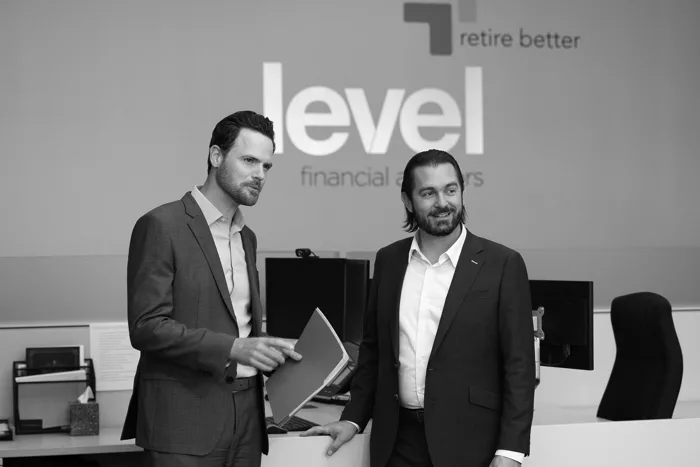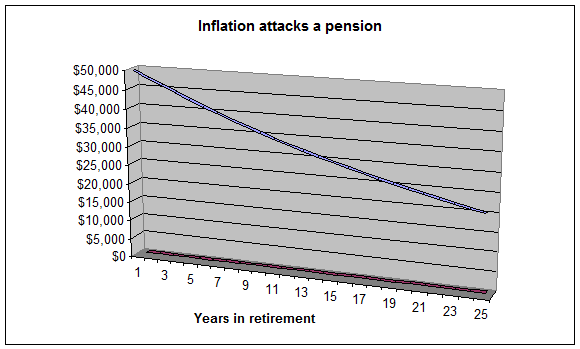Inflation is a leech that sucks the life out of our cash assets. Over time it steadily erodes the value of an unprotected nest egg.
This chart shows how the real purchasing power of a $50,000 fixed pension payment is gradually decreased by a 3.5 percent annual inflation rate.


